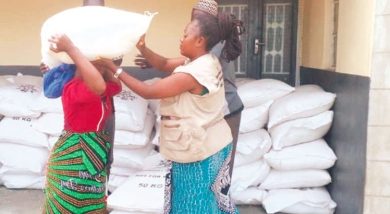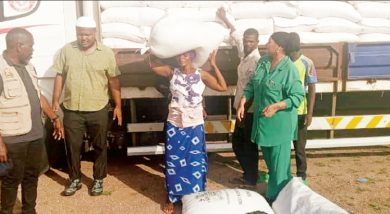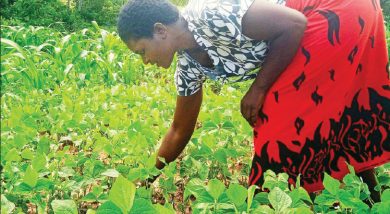FOOD CRISIS: Despair as hunger expected to ravage 2.8 million
Food security and fiscal authorities on Thursday were dodgy on specifics of how they will combat hunger amid growing fears that the food crisis could be worse than previously thought.
The 2015 Malawi Vulnerability Assessment Committee (Mvac) report that The Nation has seen shows that around 2.8 million Malawians—roughly 20 percent of the 16 million strong population—face starvation in 25 of the country’s 28 districts.
According to the findings, the 25 affected districts are Balaka, Blantyre, Chikwawa, Chiradzulu, Chitipa, Dedza, Dowa, Karonga, Kasungu, Lilongwe, Machinga, Mangochi, Mchinji, Mulanje, Mwanza, Mzimba, Neno, Nkhotakota, Nsanje, Ntcheu, Phalombe, Rumphi, Salima, Thyolo and Zomba.
The hunger, according to the report, will start biting hard in October this year up to March next year, unless government and partners move in swiftly to rescue the affected population.
The 2.8 million represents more than three times the number of food-deficit people recorded last year.

It also comes to light after government announced recently that this season’s crop output has dropped by around 30 percent on the back of floods that washed away crops and drought that scorched plants.
This year’s number of hungry people is also the highest in 10 years and poses both fiscal and monetary policy challenges given the strategic nature of food to the country’s economy, especially on headline inflation; and on budgetary operations.
The last time the country registered another serious food crisis was during the 2012/13 farming season when 1.63 million people were food insecure.
Food security in Malawi is generally equated with adequate production of maize, which is estimated to account for more than 60 percent of the country’s total food production.
The Mvac preliminary findings indicate that the country has a projected deficit of 223 723 metric tonnes against expected national consumption for 2015/16 of three million metric tonnes.
The findings further estimate that government will require 113 733 metric tonnes of maize equivalent or roughly K23 billion ($51.1 million) for intervention for the three to six months period.
The amount is far beyond the K13 billion that Minister of Finance, Economic Planning and Development Goodall Gondwe said government had put aside for the purchase and importation of maize during the 2015/16 financial year.
Ministry of Agriculture spokesperson Hamilton Chimala said in an interview that while the report was yet to be approved and released by authorities, government will ensure that no Malawian dies because of hunger.
But when asked on the specific strategy government will use to raise the shortfall of K10 billion ($22.2 million) and what their logistics plan for relief food is, Chimala referred us to Treasury.
Treasury spokesperson Nations Msowoya in his e-mailed response Thursday evening said: “Once the MVAC report has been finalised and endorsed by the steering committee government will talk to partners on how best to bridge the financing gap. In addition, government has a number of programmes some of them focussing on cash transfer, public works programme, input for assets. All these programmes will complement the government intervention in addressing the foods challenges through either cash injections or food.”
Responding to our questionnaire, Sarah Rawson, head of reports and communication at World Food Programme (WFP) Malawi— one of the government’s main partners when it comes to responding to lean season food insecurity in the country—said last evening that it is “well prepared to continue assisting vulnerable people that are facing hunger, following the official release of the 2015/16 Mvac assessment findings”.
“Timely donor contributions will be paramount for effective planning and response delivery, including for prepositioning of food stocks before the rains to ensure affected populations can be reached in areas with access constraints,” said WFP.
The tens of billions needed to buy maize come after government spent about K60 billion ($133.3 million) on the Farm Input Subsidy Programme (Fisp) in 2014/15. Fisp mainly targets maize.
Commenting on the hunger situation, an agriculture economist from the Lilongwe University of Agriculture and Natural Resources (Luanar) Dr Lawrence Mapemba said in an interview yesterday that there is nothing the country can do because the problem is natural.
“The money we spent on Fisp is gone, but now government will have to source another tranche of money to ensure that the affected people are rescued. It cannot do anything about this.”
Mvac members met last week Friday at the Ministry of Finance, Economic Planning and Development conference room to get a report on the findings of the annual food security assessment conducted across the country.
The minutes of the meeting, which The Nation has also seen, indicate that the committee adopted the report of the findings that have since been sent to authorities for approval and subsequent release.
The food security forecast shows that Southern Region is the worst hit with all the districts affected while Ntchisi in the Central Region and Nkhata Bay and Likoma districts in the North appear to be food secure.
According to the report, Chikwawa District tops the number of affected people (237 618) while Mzimba and Mangochi come second and third with 226 398 and 207 164 people being food insecure. Mwanza is the least affected district with only 22 184 affected population.
The committee has since recommended government and its partners to move in with speed to assist the affected populations and save their lives.
It has also recommended that government, through Admarc, should ensure that maize is available in all viable selling posts at affordable price to curb speculation and hoarding by private traders.
The committee also wants government to deal with people who were affected by floods and were supposed to be assisted up to July 2015, but are still in camps.
Last month, government dispatched a six-member delegation to neighbouring Tanzania and Zambia to purchase 70 000 and 30 000 metric tonnes of maize respectively on the basis that local maize might be expensive.






